About India
INDIA
- Greetings
- Religious Customs
- Festivals of India
- Family Structure & Marriage
- Symbols
- Cuisine & Food
- Traditional Clothing
- Dances of India
- Epics & Mythology
- Martial Arts
- Languages
1. Greeting - The Namaste
The Namaste is one of the most popular Indian customs and isn't just restricted to the Indian territory anymore. You have Barack Obama, who has been seen doing it on various occasions, or you had Ban Ki-Moon, the UN Secretary-General, greeting everyone with a namaste at the Times Square in New York on the first International Yoga Day.But, what's the significance?
The Namaste, or namaskar, or 'namaskar' is one of the five forms of traditional greetings mentioned in the ancient Hindu scriptures, the Vedas. It translates to 'I bow to you' and greeting one another with it is a way of saying 'May our minds meet', indicated by the folded palms placed before the chest. The word Namaha can also be translated as 'na ma' (not mine), to signify the reductions of one's ego in the presence of the other.
3. Family Structure - Joint Families
A Joint Family
Also, in India, there exists the concept of a joint family, wherein the entire family (parents, wife, children and in some cases, relatives) all live together. This is mostly because of the cohesive nature of the Indian society, and also reportedly helps in handling pressure and stress.
4. Symbols - Fasting
Fasting is an integral part of Hindu Culture. Fasts or Vrats or Upvas are a way to represent your sincerity and resolve, or express your gratitude to the Gods and Goddesses. People throughout the country observe fasts during various religious occasions. Some people also observe fast on different days of a week in favour of a particular God or Goddess associated with that specific day. It is widely believed that by doing so, you are depriving your body of a basic necessity and thus, punishing yourself to cleanse off the sins that you have committed until the day of fast.
The rules and regulations of a rapid are in accordance with the particular occasion. The origin of fast probably comes from the Vedic ritual of kindling the sacrificial fire for sacrifice purposes. Since the word 'upvas' has been used for denoting both fasts and kindling sacrificial fire, it can be thought that people observed fasts when they had to kindle or rekindle the domestic fires kept in their homes to perform daily sacrifices.
5. Religious Customs - Holy Cow
Cow, in the Indian culture, is considered to be a Holy animal. She is worshipped as a maternal figure and is a depiction of the bounty of Mother Earth. Lord Krishna, who grew up as cow herder is often depicted as playing his flute among cows and Gopis (milkmaids) dancing to his tunes. Interestingly, Lord Krishna is also known by the name of 'Govinda' or 'Gopala', which translates to the 'friend and protector of cow'. Hence, cows have an auspicious significance in Indian Culture and religion.
Even Lord Shiva's trusted vehicle is Nandi- the sacred bull. Thus, feeding a cow or making contributions for cow shelters is of immense religious importance for Indians. The Vedic scriptures, in various verses, have emphasised the need to protect and care for cows. Cows are a source of life-sustaining milk. Even the cow dung is an essential and energy-efficient source of fuel, especially in rural India. Killing the cow or consuming cow meat is considered to be a sin. Hence, several states in India have banned the slaughter of cows by law. Mother cow is, however, not worshipped as other deities. The religion and culture of India appreciate and expresses its gratitude towards this innocent animal who gives back to mother Earth and its people in more than one form.
6. Architecture - The Science Behind Temples
Temples
Most temples are located along magnetic wave lines of the Earth, which help in maximising the available positive energy. The copper plate (called Garbhagriha or Moolasthan) buried under the main idol absorbs and resonates this energy to its surroundings. Going to the temple often helps in having a positive mind and garnering positive energies, which in turn lead to healthier functioning.
It is also a practice to take off footwear before entering places of worship because they would bring in the dirt to an otherwise cleansed and sanctified environment.
7. Marriage - Arranged Mariage System
8. Religious Symbols
The Swastika
The Indian traditions and scriptures contain various signs and symbols which have multiple meanings. For example, the usage of the Swastika, in the Indian context, does not point towards Adolf Hitler or Nazism. It is the symbol of Lord Ganesha, the remover of obstacles. The arms of the Swastika have various meanings. They signify the four Vedas, the four constellations, or the four primary aims of human pursuit.
9. Traditions and Customs - Atithi Devo Bhavah
10. Dresses of India - Indian Ethnic Wear
India is a land of 'unity in diversity', and our dances are no different. Different forms of dance(classified as folk or classical) find origin from different parts of the country, and they are a way of representation of the particular culture from which they originate. Eight classical dances, which are classified as Indian classical dances and find a mention in the Hindu Sanskrit text 'Natyashashtra', (a text of performing arts) are:
- Bharatnatyam from Tamil Nadu
- Kathakali from Kerela
- Kathak from North, West and Central India
- Mohiniyattam from Kerela
- Kuchipudi from Andhra Pradesh
- Oddisi from Odhisa
- Manipuri from Manipur
- Sattriya from Assam
All the dance mentioned above forms are a complete dance drama, wherein a dancer or performer narrates an entire story, almost entirely and exclusively through gestures. Such stories are mostly based on the vast Indian mythology. Classical dances in India are strictly classified as and performed according to the rules and guidelines prescribed in the Natyashastra. Just like Classical dances, folk dances in India too originate from different regions of the country. These performances are mostly based on stories which are orally passed on from one generation to the other.
Folk dances mainly trace their importance to the rural areas, where performances depict the day to day life of rural inhabitants. The process for a suitable match is one long and tiring effort, which begins with matching some criteria like the horoscope, religion, caste, professional stature, physical appearance and culture. It is made sure that majority of the requirements are a 'match made in heaven' (even if it has to be tailor-made). After all the checkboxes are ticked, the elders of the family meet for a face to face interaction. Once the talks are successful, preparations for the wedding begin in full swing.
12. Cuisine - Indian Food
The staple, however, throughout the nation consists mostly of rice, wheat and Bengal gram (Chana). While vegetarian food is an integral part of Gujrati South Indian and Rajasthani cuisines, non-vegetarian dishes form a central part of Mughlai, Bengali, North Indian and Punjabi cuisine. It is also interesting to note that specific cuisines like that of Kashmir have also been influenced by foreign cooking styles from Central Asia, Persia and Afghanistan.
13. Scriptures - Epics
14. Indian Martial Arts
15. Eating with Hands
16. Languages
There exist thousands of traditions and culture in India, and quite a few of them would leave outsiders rather curious. But the crux of Indian society and culture has always been to be well mannered, polite, respect others, and progress together.
Best 20 places of India: Nowadays People like to Travel as they want to explore the world and watch everything. And India is one of the popular tourist destinations in Asia. India has so many places to visit and it’s a great opportunity for tourism. So here are some of the best places to visit in India. We should know about India first. As we know India is the oldest civilization world with a rich cultural heritage. India is the most populous democracy in the world. India has the largest Hindu population in the world. It is the busiest city where everyone is running after fulfilling their dream.
So, let’s start to know about the places we were waiting for!
01. Taj Mahal:
Location: Dharmapuri, Forest Colony, Tajganj, Agra, Uttar Pradesh, India
Google map: https://goo.gl/maps/6XArgY8LBf96jmMG8
Taj Mahal is a very popular tourist destination because of its History. It was committed by the Mughal emperor Shah Jahan to house the tomb of his wife Mumtaz Mahal.
One of the 7 wonders of the world Taj Mahal is one of them. This building has no companion anywhere in the city. When you look at the Taj Mahal, you can see the beauty of Indian architecture tradition. Taj Mahal is undoubtedly a beautiful architectural masterpiece that is not found in any part of the world. The best time to visit Agra is in the winter season Between November to March when the weather is perfect for sightseeing.

Entry Fee:
- INR 45+ additional INR 200 to see the main mausoleum (for Indians)
- INR 535+ additional INR 200 to see the main mausoleum (for SAARK and BIMSTEC)
- INR 1050+ additional INR 200 to see the main mausoleum (for Foreigners)
- Free (for Children below age 15)
Regular tickets are available in front of three gates.
Timing: 6 am to 7 pm every day.
02. Victoria Memorial:
Location: Victoria Memorial, Museum in Kolkata, India
Google Map: https://goo.gl/maps/mX4jsW6Nq22JDWRd6
Victoria Memorial is the most beautiful place in India. It was built in 1906 and this Museum was designed by Sir William Emerson. It’s over an area of 64 acres. Victoria Memorial is the largest marble building in Kolkata and this marble was made from Makrana marble from Rajasthan. The structure of this Museum was built in memory of Queen Victoria and that’s the attraction of the visitors. In the museum, you can see paintings from the era, weapons, maps, stamps, and coins of those times.
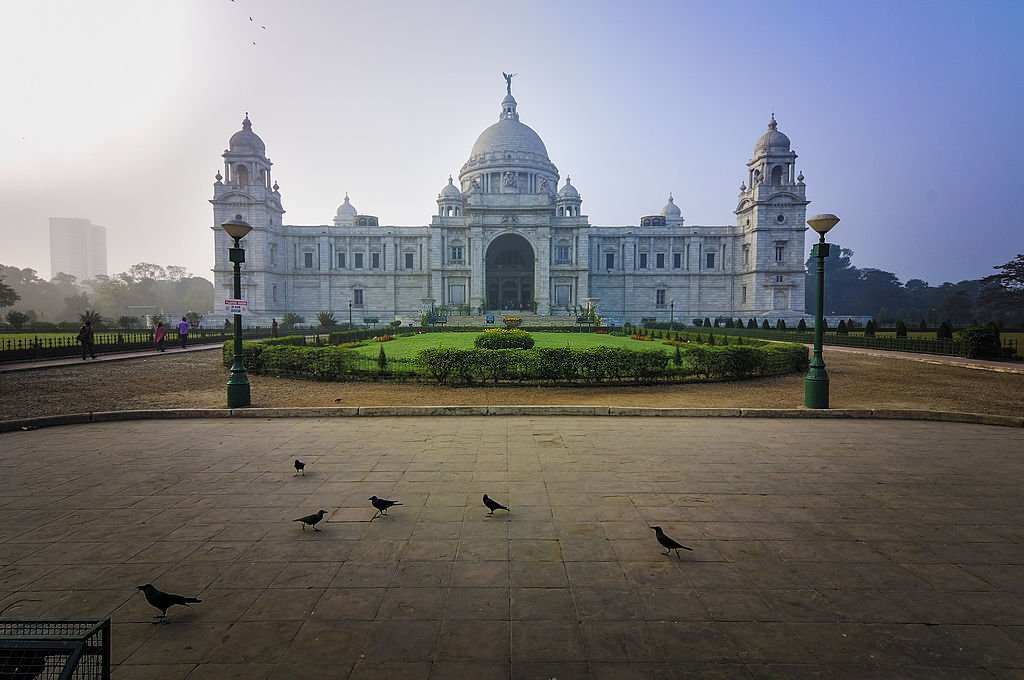
Entry Fee:
- Rs 10/- per person (for the garden)
- Rs 20/- per person (for the Museum)
03. Red Fort:
Location: Red fort, Fort in Delhi, India
Google map: https://g.co/kgs/nFjuZk
Red Fort was constructed by famous Mughal emperors Shah Jahan. Its area is around 254.67 acres. This beautiful Red Fort is built by Ustad Ahmed Lahori. It has a style of Islamic & Mughal architecture and this architecture work was a masterpiece. The light and sound show is one of the most attractive things in Red Fort and It shows a 1-hour audio video for the history of Delhi and the Red Fort. It also shows and explains the good deeds of the emperors who have internal love for the city.
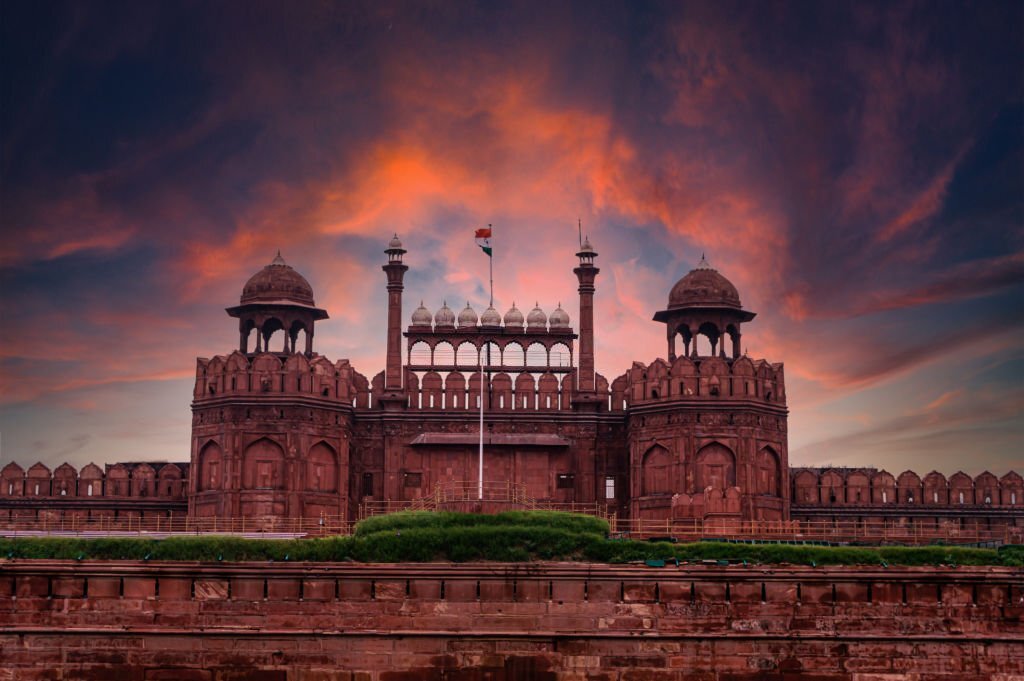
Entry Fee: Rs35 for Indians and Rs 500 for foreigners.
04. Kamakhya Temple:
Location: Kamakhya, Guwahati, Assam 781010, India
Google map: https://goo.gl/maps/KZjfdhFXFoi9J3V26
Kamakhya Temple is a very well-known Temple dedicated to the mother goddess Kamakhya. It’s one of the oldest Temple of the 51 Shakti Pithas and it’s located on the top of the Nilachal Hills. Kamakhya Templeattracts thousands of tantra devotees known as the Ambubachi Mela. Durga puja and Manasha puja is also celebrated there. The Durga Puja at Kamakhya Temple is celebrated during Navaratri and this five days festival attracts the visitors the most. It’s the most enjoyable festival for Hindus. Kamakhya Temple is located in a place that is full of natural scenic beauty. October to April best time to visit Kamakhya Temple. But If you want to enjoy the Ambubachi festive then you would have to visit in the month of June.

Entry Fee: There are no entry fees in this temple but to visit the temple visitors need to stay in a long queue. There are entry fees for the VIP pass. The VIP pass entry fee is 501 Rs.
Timing: 08:00 to 13:00 and then from 14:30 to 17:30. But if you want to avoid the rush you must go to visit in the afternoon.
05. Rishikesh:
Location: Rishikesh, Uttarakhand, India
Google Map: https://goo.gl/maps/HKnY3wThhqCY9npP6
Rishikesh is one of the most interesting ancient places in India and it’s the perfect destination for a short holiday. To visit this place is all one needs to rejuvenate oneself. The sacred Ganga River flows through the mountains of Rishikesh. Being a holy pilgrimage site Rishikesh celebrates all major Hindu festivals like Holi, Diwali, Vasant Panchami, and Dusshera. The best place in India only is Rishikesh for river rafting. River rafting attracts half a million adventure seekers every year. Ganga Arati takes place at sunset and the Ganga river is set alive by millions of twinkling-leafed lamps. That’s the best part of Rishikesh.
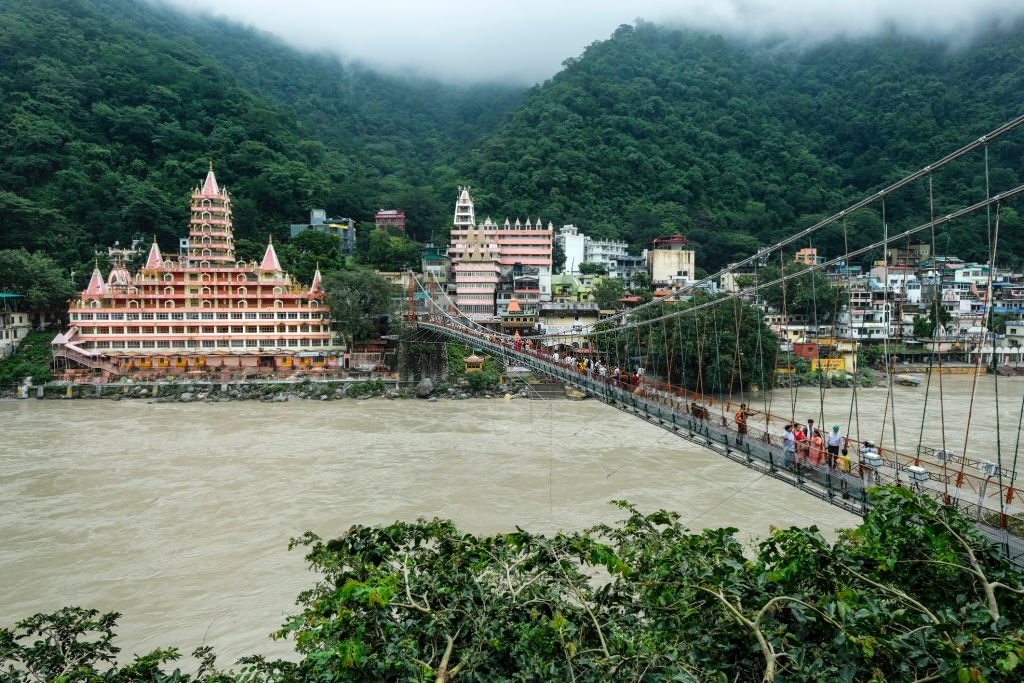
River Rafting fee and Timing: 600 per person. River rafting is from 9 pm till evening 5 pm. March to May and September to November is the perfect time to visit this place. So never forget to visit this place.
06. Varanasi:
Location: Varanasi, Uttar Pradesh, India
Google map: https://goo.gl/maps/L4jU6kzWrzDwDBZD9
Varanasi is the oldest living city in the world. Its regarded as sacred by Hindus, Buddhists, and Jains and Its Population is 1.21million (2011) Varanasi is important to Hindus because of its dedication to the god Shiva. It’s built on the banks of the River Ganga and they believe that bathing in the Ganga will help purify them. The most beautiful scene in Varanasi is the evening time of Varanasi Ghats. And the arati is always carried out facing the river Ganga. The arati is always accompanied by different songs sung while raising the Ganga and that’s very peaceful.
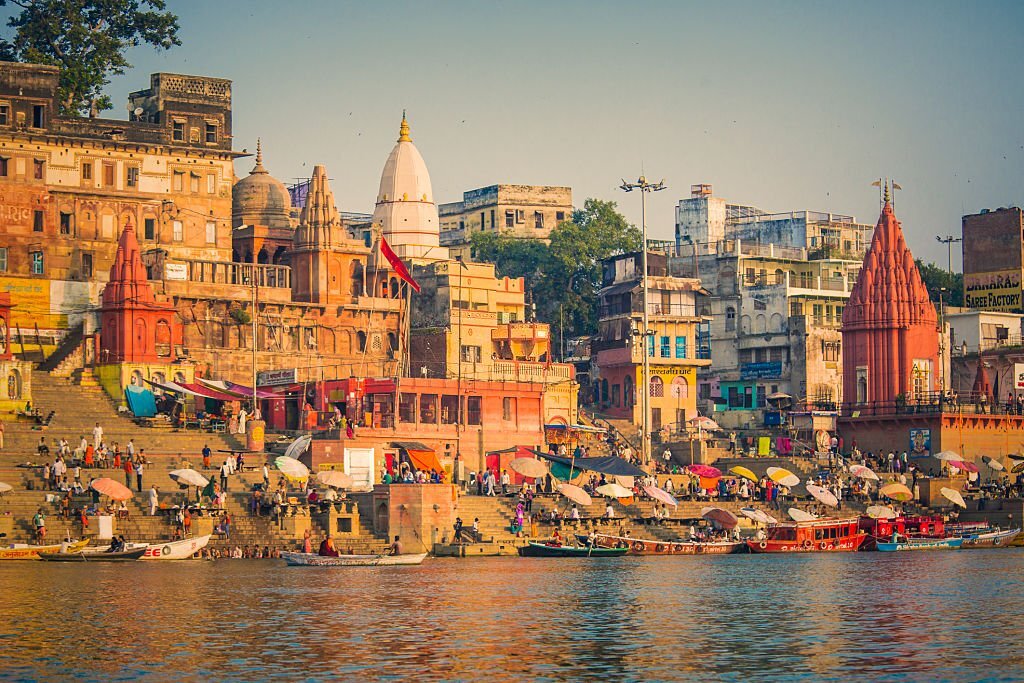
07. Rann of Kutch:
Location: Rann of Kutch, Gujarat, India
Google map: https://goo.gl/maps/Wt1Bx5m2HhqkCAWr7
Rann of Kutch is a salty land and It’s the largest salt desert in the world. Rann of Kutch is a beautiful variety of desert that you must see in India. The best thing about Rann of Kutch is the festival. The festival is attractive because of its activities but the festival is seasonal and a little expensive. The most interesting about this is the camel ride. And it’s a very good place for photography. In Rann of Kutch, the sunrise and the sunset and the moon of Poonam night is very beautiful that you would experience If you will to this place.
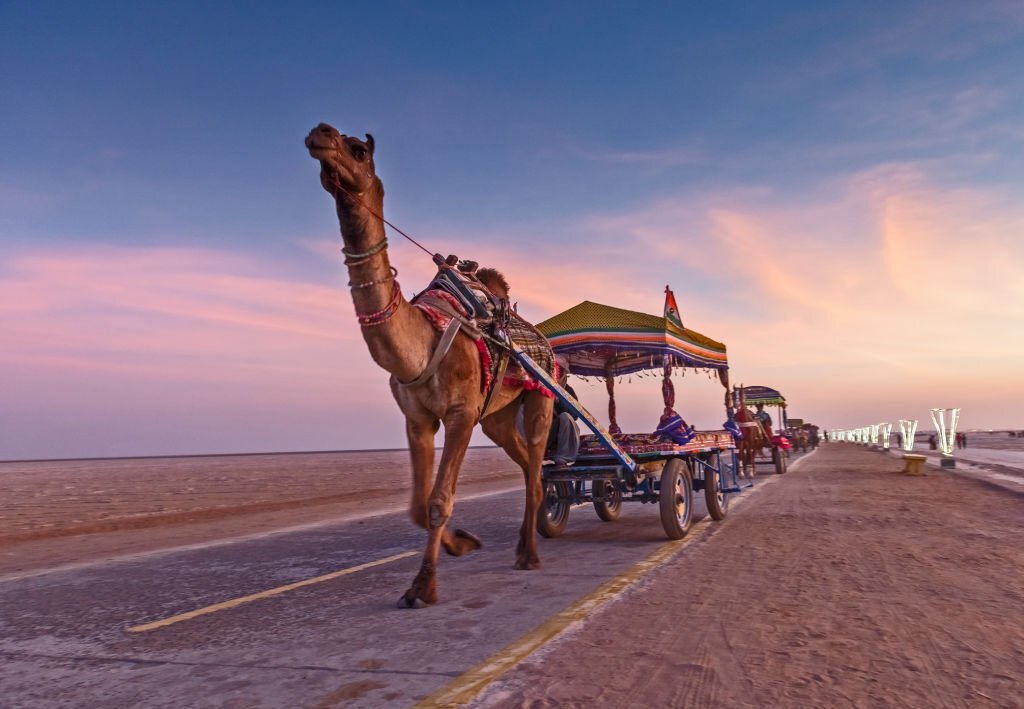
08. Kodaikanal:
Location: Kodaikanal, Tamil Nadu, India
Google map: https://goo.gl/maps/p7Nqm78ghLCFnEd47
Kodaikanal is a hill station which is located in Tamil Nadu, India. Its area is 2068 sq. km. Kodaikanal is famous for its natural scenic beauty and makes it a popular romantic distinction for newlyweds. October to June is the best time to visit Kodaikanal. Kodaikanal is the most colorful in summers and most picturesque in monsoons.
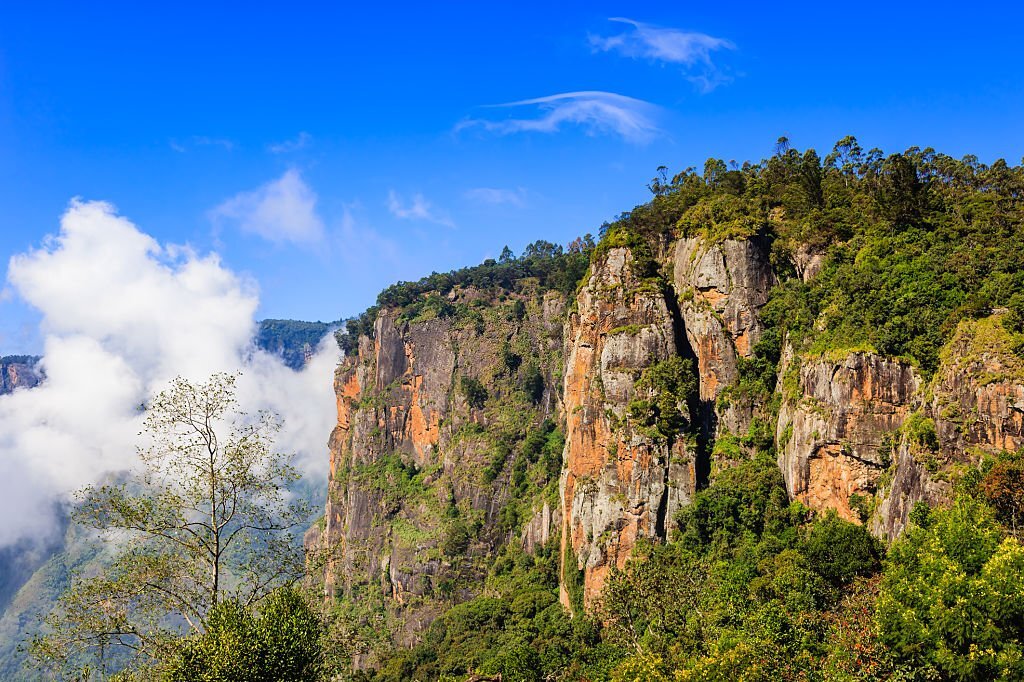
09. Gateway of India:
Location: Gateway of India Mumbai, India
Google Map: https://goo.gl/maps/p7Nqm78ghLCFnEd47
The Gateway of India is the most beautiful arch monument built in India. Its hights almost 85ft and its construction started on 31 March 1913. The gateway was designed by architect Wittels and it’s built with yellow basalt stone. The most famous event that takes place in The Gateway of India is the Sails Regatta. In this event, a number of sailboat races are held.
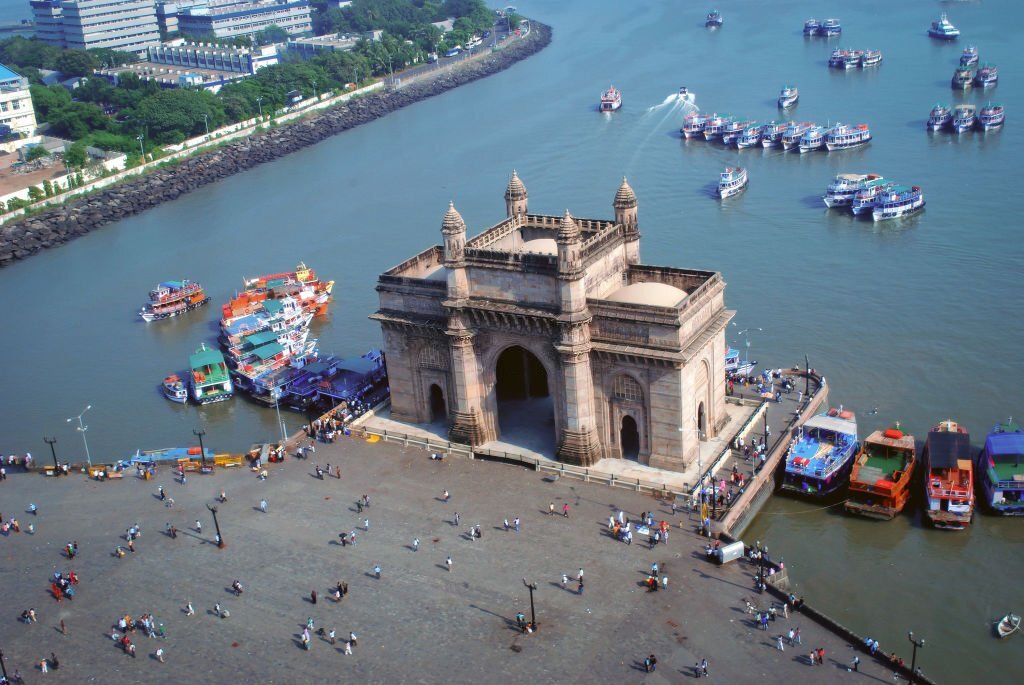
Entry Fee: Free for all
Timing: Available 24hhrs
10. Qutub Minar:
Location: Qutub Minar, New Delhi, India
Google map: https://goo.gl/maps/PeYd3xf7pxeZAhAM9
Qutub Minar is the most famous Minar all over India. It was built over the ruins of the Lal Kot and its high 72.5 ft. Qutab-ud-din Aibak built Qutub Minar (1192). Qutub Minar is Islamic architecture and its the greatest masterpiece of architecture. Qutub Minar is a complex with a few structures. The beautiful five-floor tower of Qutub Minar impressed everyone for sure. The best time for visiting this place must be winter.
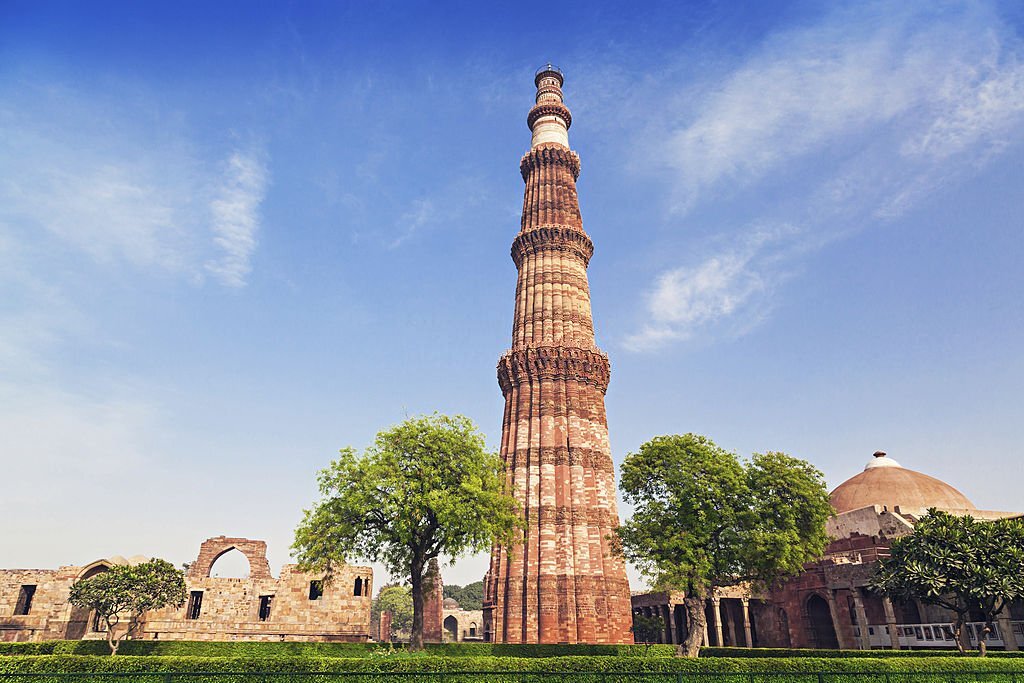
Timing: All days all the week 7 am to 5 pm.
Entry Fee: 35 for Indians,550 for foreigners.
11. Elephant Caves:
Location: Gharapuri, Maharashtra 400094, India
Google map: https://goo.gl/maps/Acsd5XPuL1W9e6Sh8
Elephant Cave is the third cave in the world and that’s very impressive. This cave has the 6 meters (20ft) high Trimurti sculpture and a very famous sculpture. It tells the story of the ancient history of India and that’s very attractive for tourists. There are very beautiful statues of Lord Shiva. November to the end of February is the best time for visiting Elephant Caves.
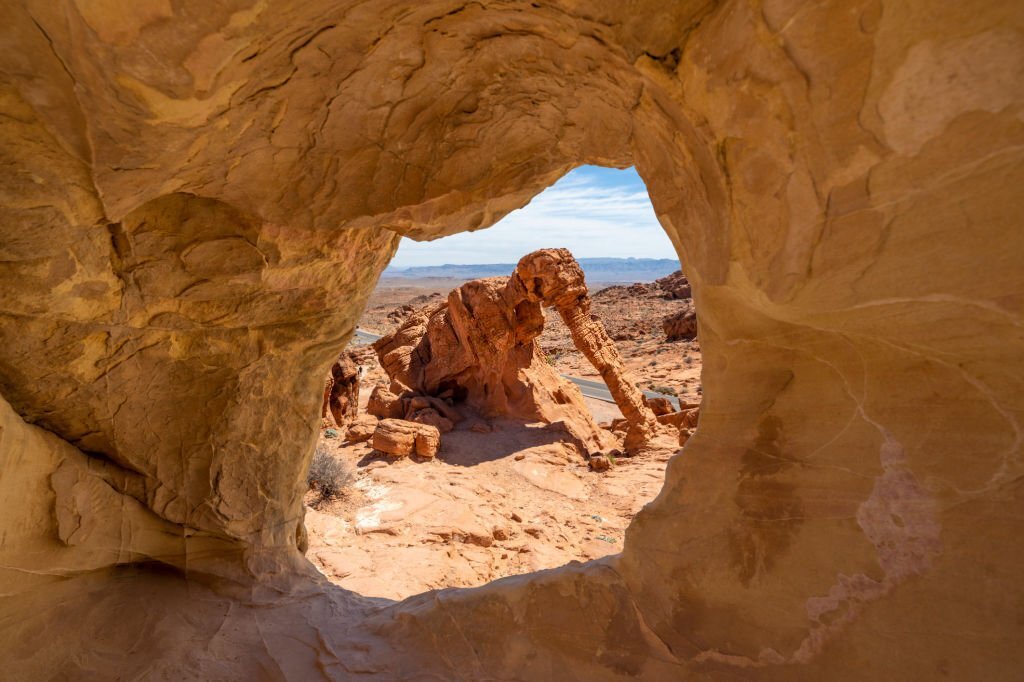
Entry Fee INR 40 for Indians, INR 600 for Foreign (Free for children below age 15).
12. Ooty:
Location: Ooty, Tamil Nadu, India
Google Map: https://goo.gl/maps/p5B9xk4YoHDwZnzR8
Ooty is a popular hill station. Its original name is Udhagamandalam and it is 36sq km. Ooty is one of the best places for shooting in India. The photographer always wants to capture the scenery and beauty of nature in the photographic camera. One of the most important parts of every Ooty tour is that there is indeed a place to visit like Ooty Botanical Gardens, Deer park Kalhatty Waterfalls, Ooty toy train, and so on. Every nature lover people should visit this place in their life.
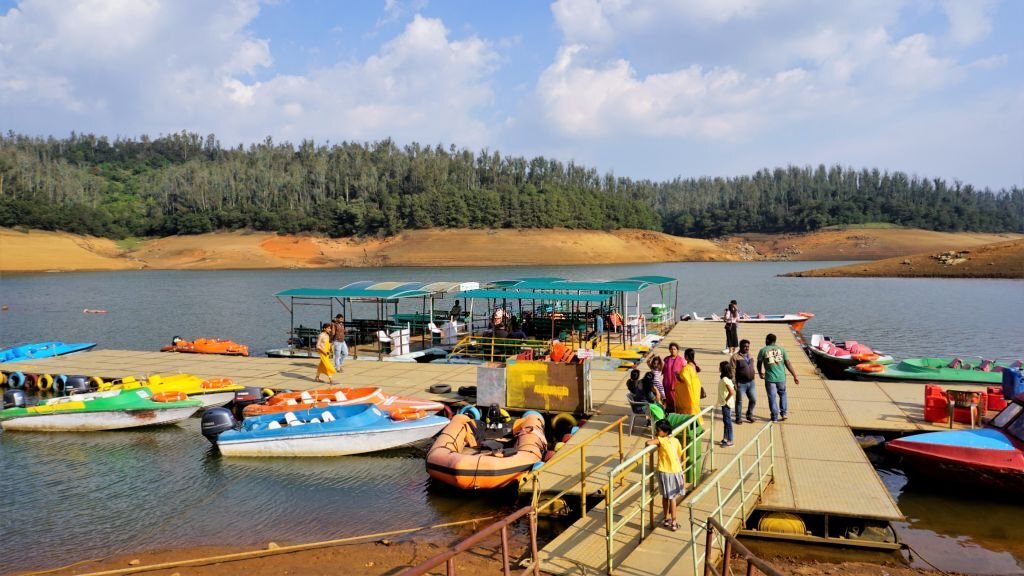
Entry Fee: 13 per person.
Timing: 9 am – 6 pm at any time.
13. Hawa Mahal
Location: Hawa Mahal, Jaipur, India
Google map: https://goo.gl/maps/pJtmFd1SPDevtCsm6
Hawa Mahal is the beauty of the heart of Jaipur, India. Hawa Mahal is also known as the “Palace of the Winds”. India’s famous tourist attraction is Hawa Mahal. It’s almost 50 feet. Its architected by lap Chand usta and it has built-in red and link-colored sandstone. Hawa Mahal is a worth visiting place and landmark building of Jaipur because of its architecture. It has 953 windows for royal women and lots of small or tiny and big sizes Windows all over the place. It would be a waste to skip this kind of place. Such a beautiful place it is. If you visit Hawa Mahal, early in the Moring You will see the main beauty of Hawa Maha. This time the environment is quiet and calm. October to March is the best time to visit Hawa Mahal.

Entry Fee: Rs 50 for Indian, Rs 200 for foreign.
Timing: every day from 9.30 am to 5.00 pm.
14. Humayun’s Tomb:
Location: Mathura Road Opposite, Hazrat Nizamuddin Aulia Dargah, Mathura Rd, Nizamuddin, Nizamuddin East, New Delhi, Delhi 110013, India
Google map: https://g.page/HumayunsTomb
Humayun’s Tomb is one of the greatest examples of Mughal architecture. Humayun’s Tomb has the perfect charbagh garden and it has never been seen in India. It’s very nice beautiful and well maintained and the old trees have their own beauty and which makes the place more aesthetic. Actually, If you visit this place, you will feel a heavenly experience and this place is so much peace and cleanliness.
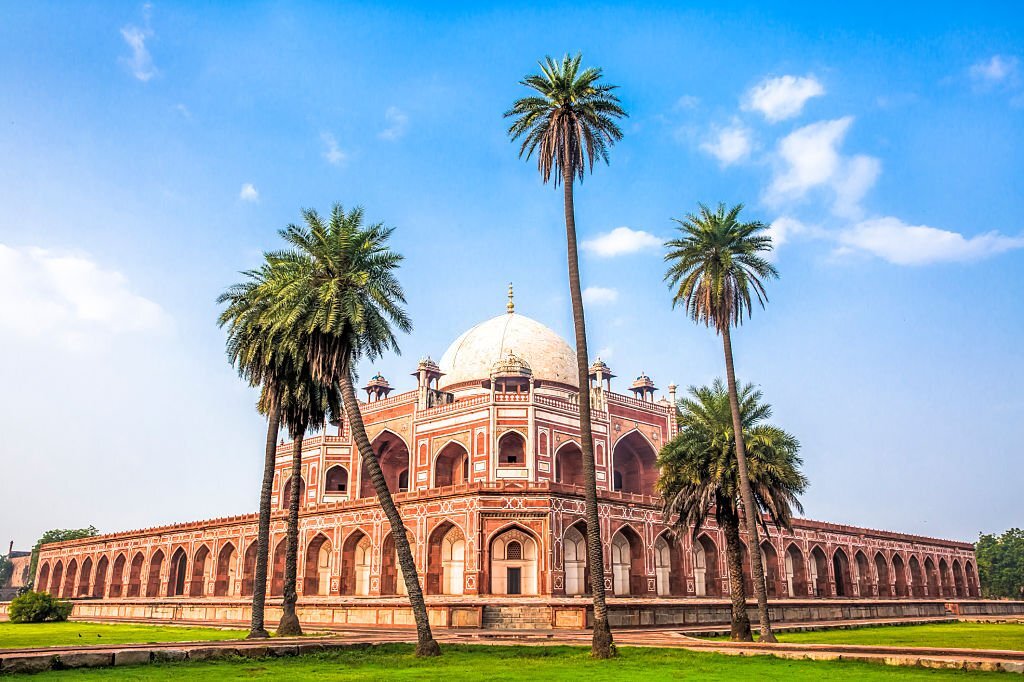
Entry Fee: INR 35 FOR Indians and INR 550 for foreigners.
15. India Gate:
Location: New Delhi, India
Google map: https://goo.gl/maps/JuwcpJciGMn13FNe8
India Gate is the most important monument in this city. It’s a built-in commemoration of those soldiers who were killed during the World War and more than 80000 Indian soldiers were killed. India Gate is designed by Sir Edwin Lutyens and it’s almost 138 feet. India Gate is the most visited tourist destination because of its architecture. It’s just wonderful.
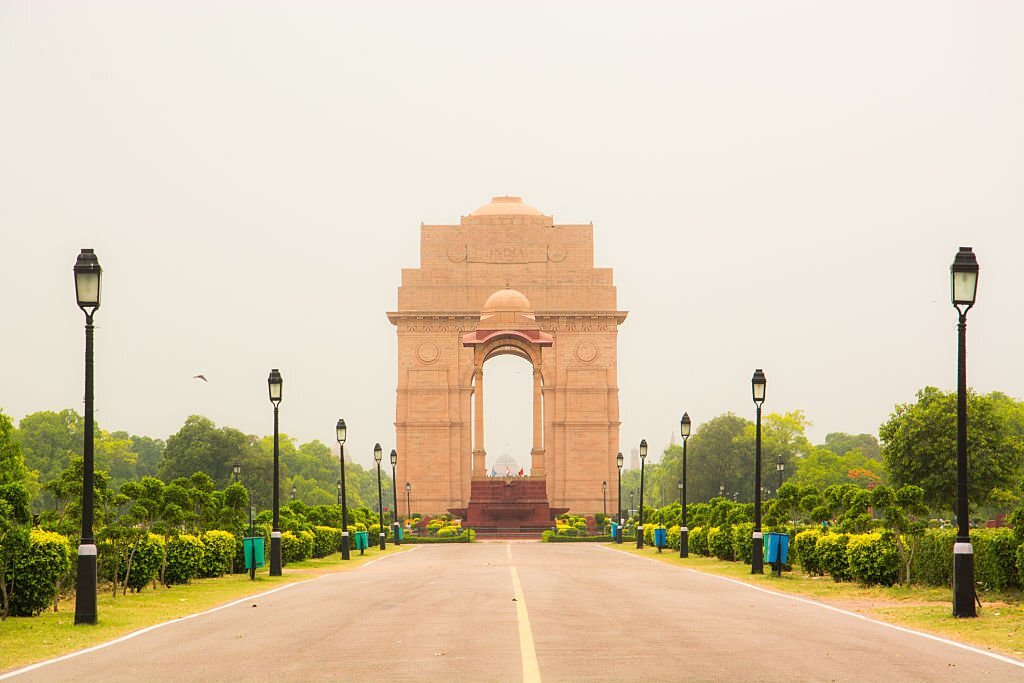
Entry Fee: Free
Timing: Morning till evening every day.
16. Ranthambore National Park:
Google map: https://g.page/RTRSWM
Ranthambore National Park is the most renowned park in this city and it’s the biggest park in India. Ranthambore National Park is a major wildlife tourist attraction and it has the attention of wildlife lovers and photographers. Huge wild animals are there and it’s home to a rich variety of birds. A Jeep Safari is conducted on a 6-seated vehicle.
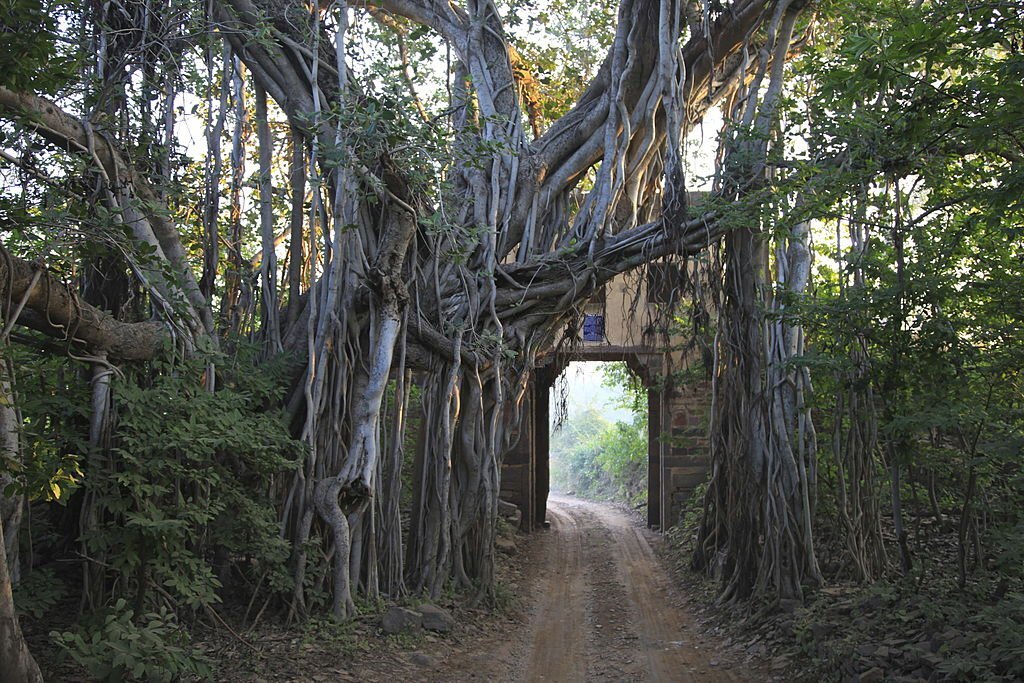
Entry fee: Rs 100 for Indians and Rs 30 for Indian students.
17. Chandratal:
Location: Chandratal, Himachal Pradesh, India
Google map: https://maps.app.goo.gl/yupEq5VN1Kx
Chandratal is a beautiful lake which is located in Himachal Pradesh in India. It’s also known as simple moon lake and its height is 14100 feet. The beauty of Chandratal feels like Heaven. The breathtaking atmosphere and the view of blue water were awesome. If you seat there for a while and take a deep breath and feel nature that must be the best thing and it feels like the peace of your soul. At night the sky is so good this view everyone should be experienced. The month of September is the best time for a visit there.
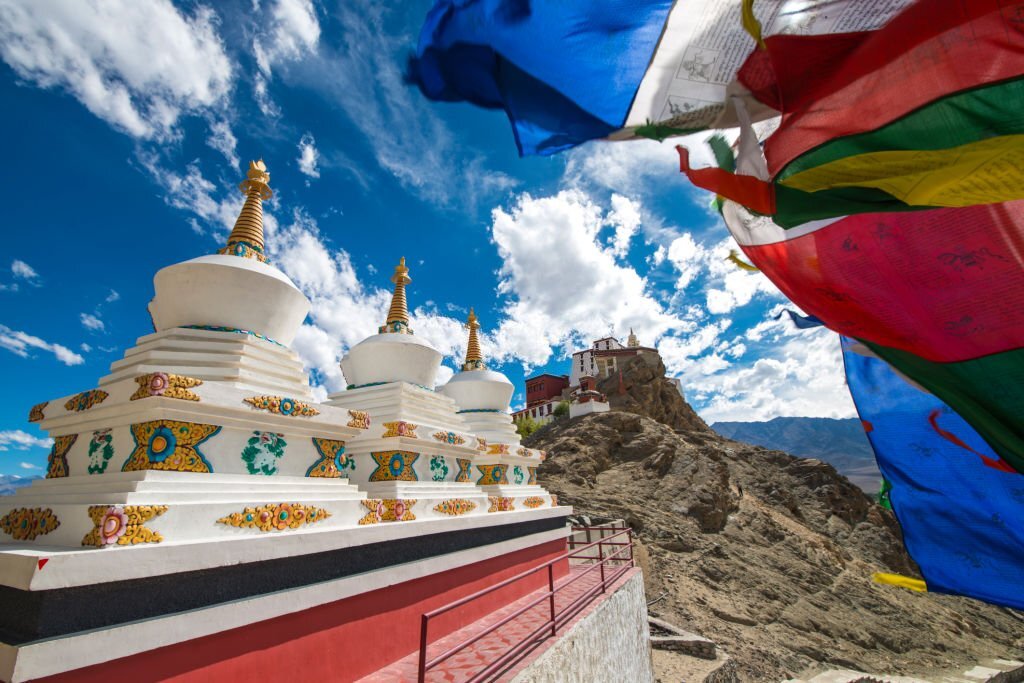
18. Golden Temple:
Location: Golden Temple Rd, Atta Mandi, Karta Ahluwalia, Amritsar, Punjab 143006, India
Google map: https://goo.gl/maps/tdxtYcDeEJEz3e3w9
Golden Temple is the most historic place for the Sikh religion. This temple is made out of marble which is gold plated with real gold and that covers most of the outside portion. The other name of this temple is Harmandir Sahib. Golden temple is a very famous tourist spot as well as a religious place. You must be very happy when you reach there and it feels very peaceful and pleasant. Golden Temple is a very spiritual place where you can feel, see, and admired the presence of God. The scenery in the evening time is very peaceful.

19. Shree Badrinath Temple:
Location: Badri to Mata Murti road, Badrinath, Uttarakhand 246422, India
Google map: https://maps.app.goo.gl/enVjntF3N9FqcDDd7
Hindu temple Badrinath is dedicated to maternal and Narayan. It’s located on the Garhwali hill track. Badrinath is one of the most ancient temples and its heavenly beauty. Everyone believes that Lord Vishnu sat in penance on this mountain. When you reach the top floor of the Temple you can see the natural scenic beauty and it’s very peaceful.
Entry Fee: Free.
20. Sunderbans National Park:
Location: Kolkata, West Bengal 743370, India
Google map: https://goo.gl/maps/gUN6bQrTnTGWC5ie9
Sundarbans national park is a famous park for Tiger Reserve. Its area is 1330.10sq. km. Honestly, The scenery of this place depends on your luck. Because sometimes it’s good or sometimes it’s not. If you are a wildlife lover you must visit this place. It’s also good for wildlife photographers.
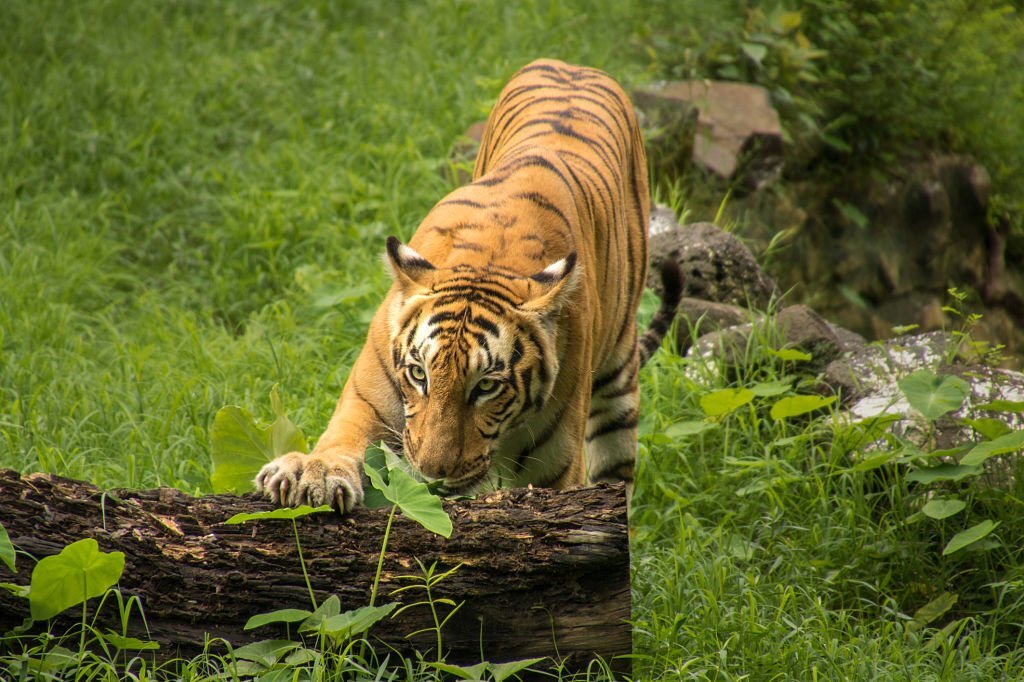
Entry fee:60 rupees for Indians and 200 for foreigners
Related Article: 45 best honeymoon places in India (2022)
I have put the best places in India in front of you. I hope you like these.
National Identity Elements:
1.National Flag:
The National Flag is a horizontal tricolour of India saffron (kesaria) at the top, white in the middle and India green at the bottom in equal proportion. The ratio of width of the flag to its length is two to three. In the centre of the white band is a navy-blue wheel with 24 equally spaced spokes which represents the Ashoka Chakra.
The design of the National Flag was adopted by the Constituent Assembly of India on 22 July 1947.
2.National Bird:
3.National Flower:
Lotus (Nelumbo Nucifera Gaertn) is the National Flower of India. It is a sacred flower and occupies a unique position in the art and mythology of ancient India and has been an auspicious symbol of Indian culture since time immemorial.
India is rich in flora. Currently available data place India in the tenth position in the world and fourth in Asia in plant diversity. From about 70 per cent geographical area surveyed so far, 47,000 species of plants have been described by the Botanical Survey of India (BSI).
4.National Tree:
Indian fig tree, Ficus bengalensis, whose branches root themselves like new trees over a large area. The roots then give rise to more trunks and branches. Because of this characteristic and its longevity, this tree is considered immortal and is an integral part of the myths and legends of India. Even today, the banyan tree is the focal point of village life and the village council meets under the shade of this tree.
5.National Anthem:
Bharata-bhagya-vidhata
Punjaba-Sindhu-Gujarata-Maratha
Dravida-Utkala-Banga
Vindhya-Himachala-Yamuna-Ganga
uchchala-jaladhi-taranga
Tava Shubha name jage, tava shubha asisa mage,
gahe tava jaya-gatha.
Jana-gana-mangala-dayaka jaya he
Bharata-bhagya-vidhata.
Jaya he, Jaya he, Jaya he,
jaya jaya jaya, jaya he.
Bharata-bhagya-vidhata.
Jaya he, jaya he, jaya he,
Jaya jaya jaya, jaya he.
6.State Emblem:
The State Emblem is an adaptation of the Lion Capital of Asoka at Sarnath. In the original, there are four lions, mounted back to back, on a circular abacus, which itself rests on a bell-shaped lotus. The frieze of the abacus has sculptures in high relief of an elephant, a galloping horse, a bull and a lion separated by intervening Dharma Chakras.
The profile of the Lion Capital showing three lions mounted on the abacus with a Dharma Chakra in the centre, a bull on the right and a galloping horse on the left, and outlines of Dharma Chakras on the extreme right and left was adopted as the State Emblem of India on January 26, 1950. The bell-shaped lotus was omitted. The motto Satyameva Jayate, which means 'Truth Alone Triumphs', written in Devanagari script below the profile of the Lion Capital is part of the State Emblem of India
7.National Calendar:
The national calendar based on the Saka Era, with Chaitra as its first month and a normal year of 365 days was adopted from 22 March 1957 along with the Gregorian calendar for the following official purposes:
- Gazette of India.
- News broadcast by All India Radio.
- Calendars issued by the Government of India.
- Government communications addressed to the public.
Dates of the national calendar have a permanent correspondence with dates of the Gregorian calendar, 1 Chaitra falling on 22 March normally and on 21 March in leap year.
8.National Animal:
9.National Song:
Sujalam, suphalam, malayaja shitalam,
Shasyashyamalam, Mataram!
Vande Mataram!
Shubhrajyotsna pulakitayaminim,
Phullakusumita drumadala shobhinim,
Suhasinim sumadhura bhashinim,
Sukhadam varadam, Mataram!
Vande Mataram, Vande Mataram!
10.Currency Symbol:
The symbol of Indian Rupee typifies India's international identity for money transactions and economic strength. The Indian Rupee sign is an allegory of Indian ethos. The symbol is an amalgam of Devanagari "Ra" and the Roman Capital "R" with two parallel horizontal stripes running at the top representing the national flag and also the "equal to" sign. The Indian Rupee sign was adopted by the Government of India on 15th July, 2010.
The symbol, conceptualised and designed by Udaya Kumar, a post graduate in Design from Indian Institute of Technology Bombay, has been chosen from thousands of concept entries received by the Ministry of Finance through an open competition among resident Indian nationals. The process of establishing and implementing this new identity is underway through various digital technology and computer applications.





























Very good content
ReplyDeleteThankyou Sir
Delete